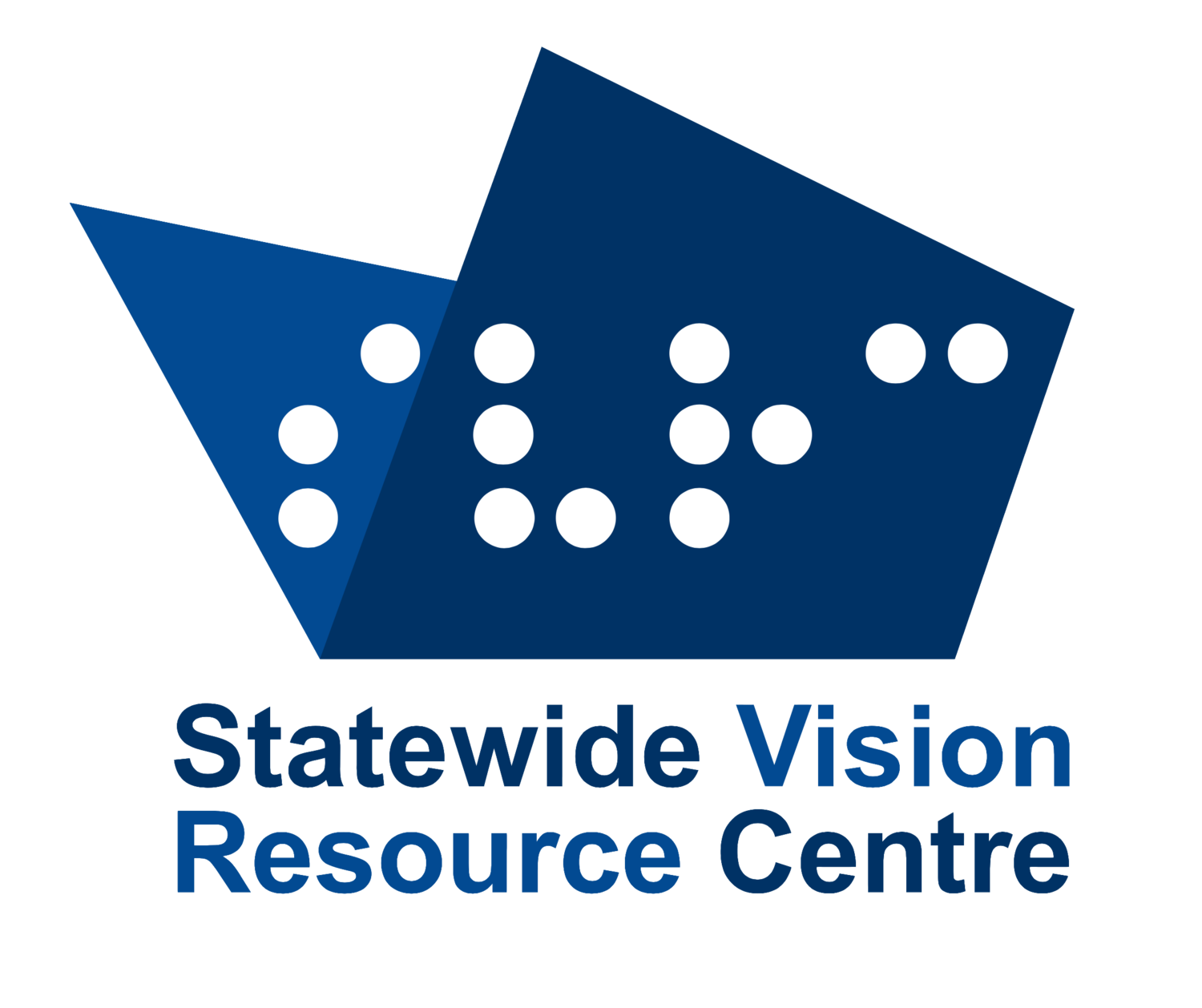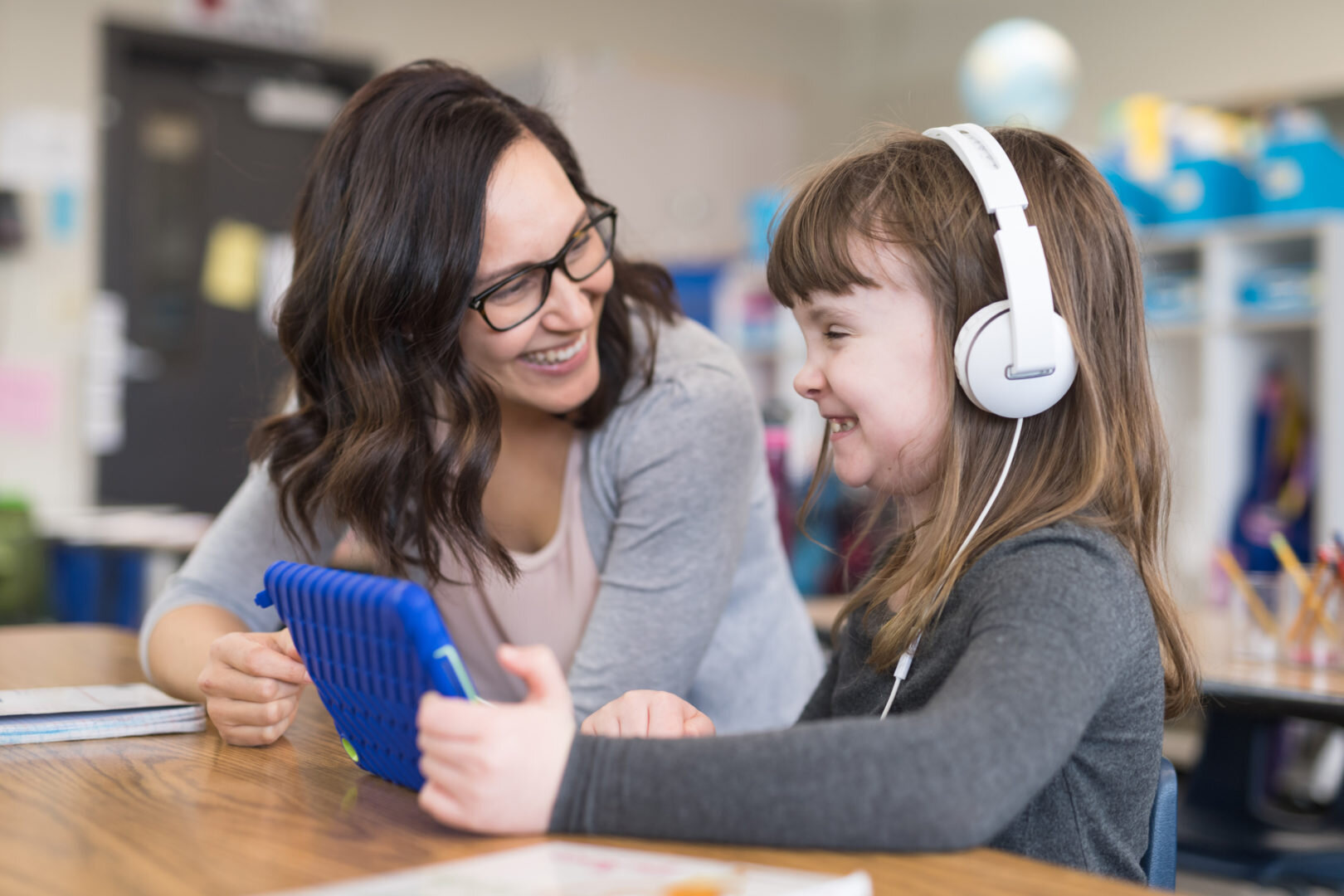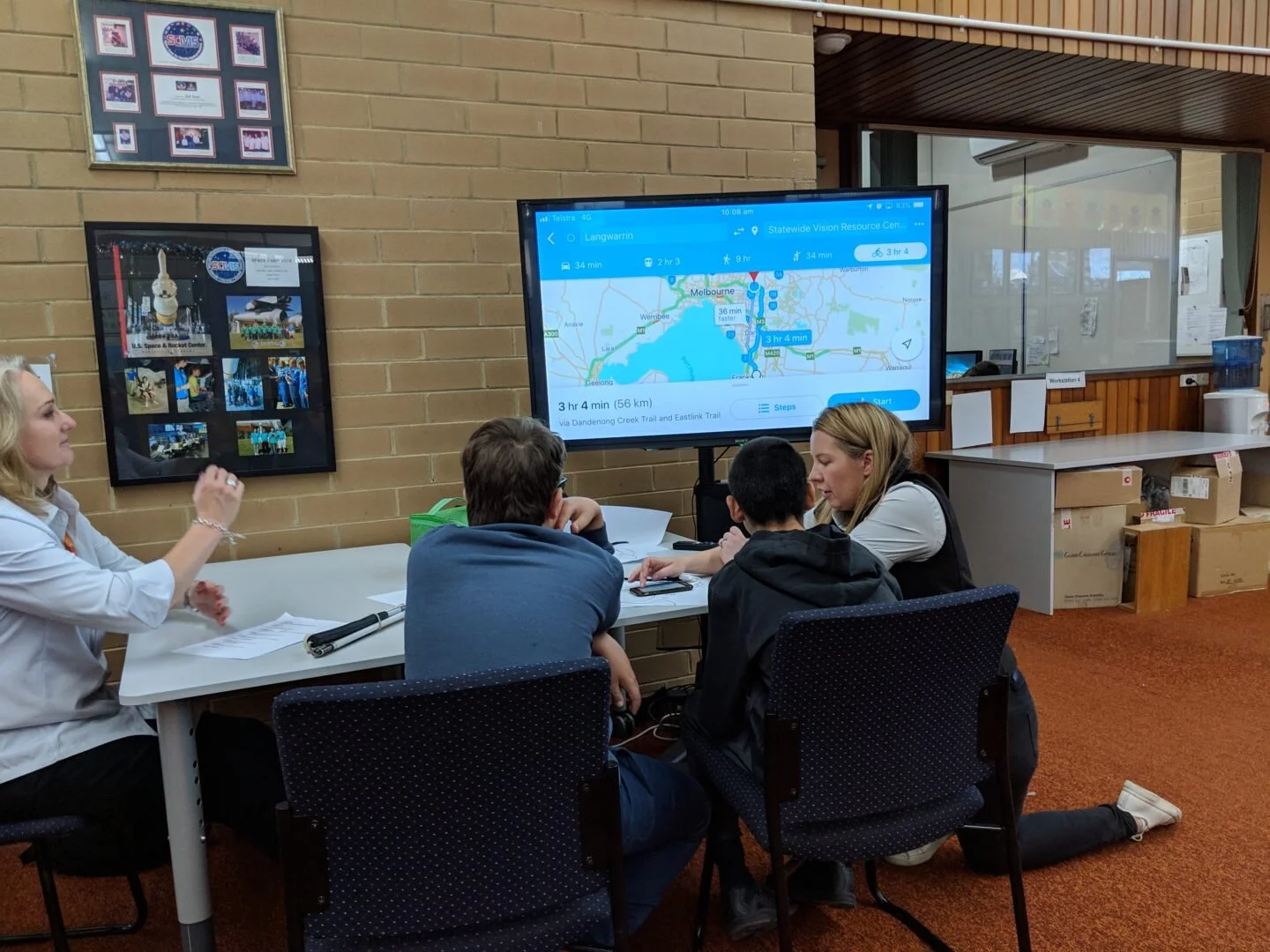What is the Expanded Core Curriculum?
Students who are blind or have low vision may need to develop an array of disability-specific skills in order to fully access and engage with the school curriculum. These additional skills are known as the Expanded Core Curriculum.
The Expanded Core Curriculum recognises that students with vision impairment may encounter barriers to learning, such as information that is only presented in a visual way. To address this, the Expanded Core Curriculum provides for the teaching of a range of skills and knowledge to enable students to work around such barriers.
A growing body of research suggests that instruction in the areas of the Expanded Core Curriculum leads to positive outcomes for students with vision impairment, such as engaging in social activities, attending university, and having a job.
Most of the components of the Expanded Core Curriculum are usually learned incidentally by students who are fully sighted by using all of their senses, particularly vision, to understand the world and other people. The skills and knowledge that sighted students gain through visual observation may need to be systematically and sequentially taught to students with vision impairment. The Expanded Core Curriculum was developed to address the essential learning areas, concepts, and experiences that are unique to students with vision impairment, so that these students are better equipped to understand and interact successfully with others and the world around them.
The Expanded Core Curriculum is learnt in addition to the core curriculum, which for Victorian students is the Victorian Curriculum F–10 (including the Towards Foundation Levels A-D). For most students in senior secondary school, this also includes the Victorian Certificate of Education (VCE) or the Victorian Certificate of Applied Learning (VCAL). It can be incorporated into many subject areas so that students with vision impairment develop important specialist skills and knowledge while participating in core curriculum learning.
The content taught and learned within the Expanded Core Curriculum is unique to each individual who is blind or partially sighted, and can be taught by a qualified specialist teacher for vision impairment. The Support Skills Program and Dot Power Program run by the Statewide Vision Resource Centre also provides personalised instruction in the Expanded Core Curriculum for eligible students.
Teaching the Expanded Core Curriculum
Depending on your child’s needs, they may require specialised instruction across the nine areas of the Expanded Core Curriculum. These areas include:
Compensatory Access
Compensatory access skills involve the use of tools, adaptations, modifications and behaviours that maximise a student’s opportunity to access information and engage with learning materials when their vision interacts with barriers to learning.
The communication modes of students with vision impairments will vary depending on the degree of functional vision, impact of additional impairments, and the task to be undertaken. Students may use braille, large print, regular print with or without optical aids, electronic text (etext), tactile graphics, object and/or tactile symbols, audio materials, or any combination of these. Braille is an essential skill for nearly all students who are blind, and in most cases, offers the most efficient way to read and write.
Other compensatory skills may include computer keyboarding, study and organisational skills, exam techniques, spatial awareness, listening skills, and accessing information through listening and touch.
Assistive Technology
Assistive technology, also known as access technology, is any device or software that increases participation, achievement or independence for a person with a disability. Assistive technology may include devices designed specifically for people with vision impairment, such as braille displays, electronic magnifiers, and screen-reading software. It can also include an enlarged mouse pointer, apps for navigation, devices with voice output, and commonly-used aids such as white canes, visors, and sunglasses.
Training in the efficient maintenance and use of assistive technology, including touch typing and the use of key commands, increases the potential for improvement of student access and participation in their learning.
Orientation and Mobility
Orientation and mobility is a vital area of learning for students with vision impairment. It emphasises the right of people who have vision impairment to travel as independently as possible, enjoying and learning to the greatest extent possible from the environment through which they are passing.
Students will need to learn about themselves and the environments in which they move, building skills from basic body awareness, through to being able to independently travel in rural areas and busy cities. Developing body concepts, spatial awareness, orientation strategies and an understanding of the world are the building blocks for age-appropriate, safe and independent travel for students who are blind or who have low vision.
Students need to develop problem-solving strategies necessary to travel in familiar and unfamiliar school and community settings. Further, they may require training in specific skills, such as cane use, road crossing, and use of public transport. Optimising the use of residual vision may require the use of low-vision aids, such as telescopes and sunglasses, or strategies such as wearing hats or visors to reduce glare. People who are blind can navigate their environment through the efficient use of mobility devices and smartphone apps.
In Victoria, students with vision impairment may be eligible for Orientation and Mobility training from providers such as Guide Dogs Victoria’s Children’s Mobility Services, Vision Australia, and Independent Options for Mobility. Visiting teachers and schools often work closely with orientation and mobility specialists from these providers to plan for and deliver orientation and mobility learning for students.
Career Education
Career and vocational education for students with vision impairment should begin in early childhood and complement the career exposure students receive through the core curriculum. Focused career education can provide learners who are blind, or have low vision, with the opportunity to learn first-hand about the variety of work people do, through strategies such as role-playing, peer mentoring, and job shadowing.
Career education should be structured to address personal strengths and weaknesses, work habits, workplace social skills, vocational interests, job exposure and specific skill training programs. Older students may require instruction in employment-seeking skills, employment-keeping skills, financial management and available training programs. Work experience and exposure to a variety of different work options is very important for secondary-school-aged students.
Additional information and resources for students, parents and teachers, regarding strengthened career education for students with disabilities, is available from the Department of Education.
Independent Living
Independent living skills and personal management skills are an essential learning area for students with vision impairment. This learning area encompasses all the tasks and functions people perform, according to their abilities, in order to live as independently as possible. These needs are varied and may include skills in personal hygiene, food preparation, money and banking, time management, home management, and organisation of personal belongings. Occupational therapists are sometimes involved in helping to assess and teach some of these types of skills, and visiting teachers can work closely with these professionals to support a student’s development in this learning area.
Recreation and Leisure
Recreation and leisure skills are important to ensure physical and emotional wellbeing during the school years and beyond. With certain adaptations and modifications, students who are blind or have low vision can participate in many of the same individual and group activities enjoyed by their sighted peers. Modifications can be as simple as:
playing tennis with a larger ball for a student with low vision
using a tee rather than pitching the ball in baseball
running with a sighted guide, each holding one end of a shared length of rope
under-inflating a ball so that it is easier to catch.
Blindness-specific sports such as goalball, swish, AFL Blind, and blind cricket are designed to be played with low or no vision. Australia fields international teams in each of these sports, and goalball is a Paralympic sport. Other Paralympic sports for people with vision impairment include athletics, cycling, football (soccer), judo, skiing, swimming and rowing. Students should be aware of support from other organisations that promote inclusive recreation, leisure and sporting activities for people with vision and other impairments.
Basic motor skills, as well as cooperative play strategies, may need to be taught in a specific manner in order to maximise access and participation. Students will benefit from exposure to a healthy balance of solitary, social, passive and physical activities. To learn more about including and teaching students with vision impairment in physical education and sport, see professional learning.
Sensory Efficiency
Visual efficiency skills refer to the manners, techniques, or approaches a student uses to complete a visual task. With thorough, systematic training, most students with functional vision can learn to use their remaining (residual) vision more efficiently, enabling increased access and participation at school and beyond.
Effective use of residual vision includes applying evidence-based strategies to maximise how well a student can view information up close and at a distance. Learning to make sense of the information that a student can see is another important aspect of using their residual vision well. Students might learn how to use optical aids, like a monocular telescope, or non-optical aids and strategies, such as closing window blinds to minimise glare. It is equally important that students learn about their vision condition/s and how it affects their ability to complete visual tasks, such as reading print, as well as the aids and strategies most useful to them. Other helpful skills include learning how to study efficiently, techniques for tests and exams, and managing visual fatigue. Being able to explain their vision condition, and what is and isn’t helpful to them as a student with vision impairment, can assist others to better understand and address the student’s needs as a learner.
Social Interaction
Effective social interaction skills, such as being able to hold a conversation, are important for all students to succeed in and outside of school. For students with vision impairment, these skills can be more difficult to learn as they may not be able to visually observe how others interact and behave in order to learn what is expected socially. In many cases, students with vision impairment need to be taught the awareness and skills necessary to engage with others in a socially appropriate manner. Learning how visual aspects of social communication, such as body language, can be used and interpreted by others, can assist students to build healthy and safe social relationships. Good social skills can also help students to seek information to solve problems, participate in learning, and prepare for life after school, such as employment.
The skill of self-advocacy is a critical part of good social interaction skills for students with vision impairments. Knowing when and how to request and decline help can support students to become independent and capable learners, while maintaining positive relationships with their peers and teachers.
Self-determination
This area focuses on the importance of developing confidence. Self-determination involves the student identifying personal interests, values, motivations, as well as understanding abilities and limitations. Self-determination skills include being able to make and achieve personal goals based on knowing and valuing yourself as a person with vision impairment. Other self-determination skills include:
Understanding yourself and others
Personal management (self, belongings, activities, timeliness)
Effective communication
Self-advocacy
Decision-making
Problem-solving
Self-determination may be as simple as making choices, but may also include accepting and declining help, managing equipment breakdowns, disclosing vision impairment to a future employer, and dealing effectively with bullying or discrimination. For example, students learn from successes and failures how to achieve transition goals for education, employment and personal relationships. Self-determination skills help students to control their lives, reach personal goals, and participate in the world around them to the fullest extent possible.




